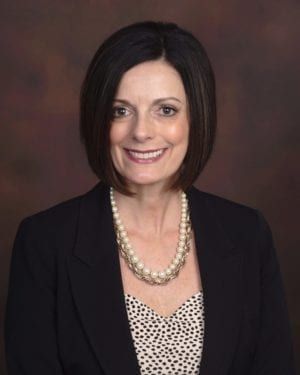3 Ways Restaurants Are Scaling Up Their Catering Business: An Interview with Jackie Swift-Kurkjian
- ezCater
- •
- 3 Min Read
- •
For many restaurants, catering has become a weapon of choice to grow their business. That’s because the catering market, worth about $61.5 billion, is a booming source of new sales for restaurants. To grow with that thriving market, some restaurants are investing in centralized catering kitchens, ghost restaurants, and call centers. To get the lowdown on those trends, we spoke with Jackie Swift-Kurkjian. Jackie is Vice President of Off-Premise Consumption for Fiesta Restaurant Group, which owns Pollo Tropical and Taco Cabana. An industry veteran, she led the catering programs for multiple national restaurant chains. Here’s our interview with Jackie:

ezCater: You’ve overseen the centralized catering kitchens of brands such as Potbelly Sandwich Shop. Those kitchens are designed to push out catered meals and small delivery orders. They behave like fulfillment centers that take, complete, and deliver online food orders. Does that business model make sense for all restaurants?
Jackie Swift-Kurkjian: If you’re going to invest in either a catering kitchen or a ghost restaurant, you’ve got to have a high-enough volume of business to justify it. Also, if you’re just getting into the catering business, don’t think about ghost restaurants at this point.
ezCater: Can you explain the term “ghost restaurant.”
Jackie Swift-Kurkjian: A ghost restaurant is a facility designed for the delivery-only experience. It’s not designed for a customer experience, and it doesn’t have any retail component. It’s essentially a production kitchen where you make the food for catering, and catering deliveries go out of that kitchen.
ezCater:Earlier you mentioned that operators shouldn’t invest in ghost restaurants at the early stages of their venture. But at what point does that option make sense?
Jackie Swift-Kurkjian: When your dine-in sales volume is so great, and you can’t push your restaurant to do more—as in improving your catering sales—that’s a great time to consider investing in a ghost restaurant.
Alternatively, if you see a mixed performance across your brand‘s restaurant locations—high-volume stores and units that aren’t being pushed to capacity—look for a less-busy restaurant to handle catering.
ezCater: That’s great advice. Could you talk more about centralized catering kitchens? The benefits and challenges associated with them?
Jackie Swift-Kurkjian: Here’s a challenge: understanding the equipment you need. You shouldn’t choose equipment based on your existing business. Instead, you should look at where you want your business to be in the next three to five years. You’ve got to project your sales volume first and then look at the equipment you need.
ezCater:At other restaurant concepts, you’ve run centralized call centers for catering and delivery orders. These are places where customer-service reps take and dispatch orders. What must happen to operate one successfully?
Jackie Swift-Kurkjian: It all starts with training. You need to immerse call-center specialists in your brand. They need to understand everything about your menu and the markets [those catering sites] are in. This is really important since the call-center specialists are the only people representing the company until the food is delivered or picked up. They have to provide a really great experience on the front end.
Call-center employees need a script for taking orders. They need a clear set of rules and information they can rely on instantly. For example, they need to know what your brand’s delivery fees are, how refunds are handled, what your hours are, and so on. These people are sales specialists who also need regular training, such as in upselling and guiding the customer through the experience.
ezCater:Even though it’s a phone call, it’s a customer experience that implies some customization and TLC, am I right?
Jackie Swift-Kurkjian:It really is. Taking a catering order is much like being a consultant who’s guiding the customer through the transaction. Customers are calling your business for a reason: they’ve chosen you to serve them a meal. If they come to you and open up their pocketbook, they want your business and what it has to offer.
ezCater:Where could this experience damage a customer relationship?
Jackie Swift-Kurkjian: When the rep isn’t prepared. The last thing a customer wants is for the phone to be answered by someone who can’t help them. We all know that happens sometimes, so you have to deal with it smartly. If the call-center rep isn’t in a position to take that person’s order or answer questions, at least take down the customer’s contact information. Then give that information to someone who can help, and then call the customer back immediately.
You have to be service oriented to be in this business. It’s all about making sure customers have a great experience so they come back again.
ezCater: So far we’ve mostly talked about challenges affecting multi-unit operators. What are the challenges of single-store operators running catering programs?
Jackie Swift-Kurkjian: Well, now that so many third-party delivery platforms are competing for drivers, the greatest challenge is the shortage of available drivers. Drivers are harder to come by because they have the flexibility to choose who they work for and when. Drivers of restaurant companies are expected to work during catering hours, basically 10 a.m. to 2 p.m. But keeping drivers there during those hours is expensive for a restaurant that hasn’t built up a big catering business yet. [Are you a restaurant operator who needs more drivers to meet demand for your catering? Learn about ezDispatch]
A second challenge is consistency. If your restaurant only gets a few catering orders a week, the quality of your product is not going to be as consistent as that of a restaurant handling six to 10 orders a day.
Training is another. Some restaurants have high turnover, so they’re always training. It’s essential that you hire a dedicated employee to run your catering business consistently and train employees.
Want to get more catering orders?







